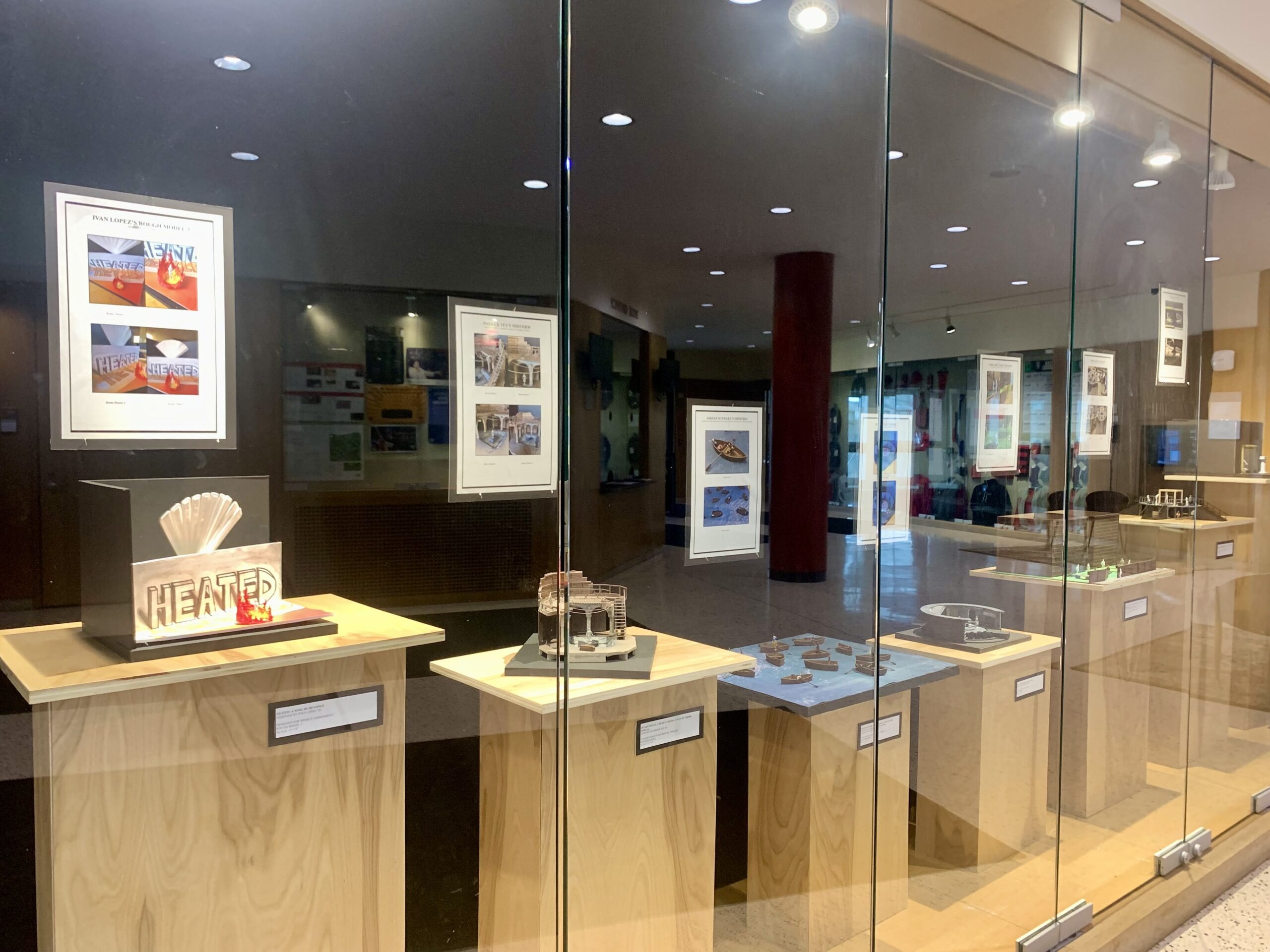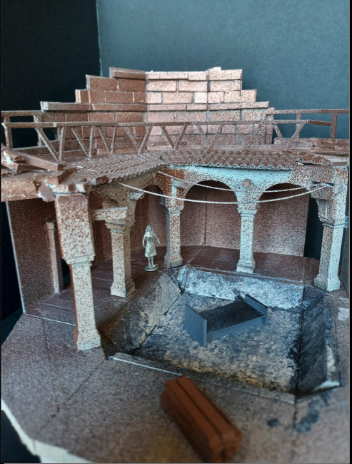In theater, how does one design and manipulate objects to tell a story? How might actors be considered as part of the space picture, and how do they connect with the inanimate? How do both body and objects occupy and create spaces in which a story can be visually told? These are some of the questions considered in the teaching of Professor Marcela Oteíza, associate professor of dance and chair of Wesleyan’s theater department.
Professor Oteíza focuses on the design of performance, specifically set design, which she likens to architectural interior design for the theater. Oteíza also researches the design and construction of street-performance objects and their relationship with protest and activism, a focus of her book project Rebel Objects of Street Theatre: Scenography, Activism, and the City.
With a background in fine arts from her undergraduate studies and an MFA in scenography, Oteíza began teaching at Wesleyan in 2004. Since then, she has taught courses in Dance, Theater, COE, and the Integrated Design, Engineering, and Applied Science program (IDEAS) at Wesleyan.
Professor Oteíza’s teaching is a prime example of finding the intersectionality between different – even seemingly opposite – disciplines like theater and the IDEAS program. For instance, in the Fall she offers an advanced theater course on Space Design for Performance (THEA 359 ). The idea of the course is to teach students about the history and theory of performance design and the different styles and aesthetics that exist such as proscenium, site-specific, or immersive theater. Additionally, in the course, she incorporates tools for theater relevant to the IDEAS program by familiarizing students with three-dimensional visualization software as well as 3D printing and laser cutting.
One of her favorite courses to teach, however, she admits, is on introductory design in performance (THEA185 Text and visual Imagination), a very STEAM-major-friendly option she encourages for any first-year even slightly interested in an introductory design class in theater.
Fun, intensive, and immersive final projects are also core to her classes. In our interview, Oteíza describes some examples such as a 24-hour performance where students have produced an array of creative self-documenting performances; a study of the waste produced daily by collecting trash created within 24 hours in wearable ziplock bags; and an examination of the price disparity of Big Macs collected from multiple McDonalds locations in different neighborhoods in the span of 24 hours for THEA 237 Performance Art
Projects like these revisit the performative quality of theater in the real-world context and the different approaches to it. On this topic, Oteíza explains, “[Performance includes] an embodied aesthetic, is a visual sculpture in constant movement, in a particular context. It also includes understanding what it means to use the body as a mode of communication.” In performance art, one can also consider the body as a space or as architecture.
When creating art, “It is important to understand what a human in a space is – what we differentiate and what we have in common to be able to communicate.” Public spaces, which are accessible to anyone without social distinction, can serve as common ground. The same is not always true in private spaces like theaters or even museums, where some may not feel welcome into the space or be able to pay the entrance fee. In her research focus on performance in the public space, Professor Oteíza expands by saying, “Public space allows for communities to connect in spaces where they are not regulated in the way that the art spaces are regulated (admission involves certain conditions like those described previously), and that allows conversation across different people. Where the theater space comes with ticket prices and certain expectations and steps to feel like you belong there, the street is open to anyone.”
When asked about why she chose to delve into this research, she cites her background as an artist who grew up in Santiago. During the Military Dictatorship of Chile, she describes that the street became a public space in which the community could express themselves. Passerbys could choose for themselves to interact or not – to speak up or not – and she became interested in the quality of the streets in opening up the stage to participants who are not your usual “ticket” buyers who frequent private spaces for performance. What’s more, when she was in graduate school, the body of the audience was understood as a homogeneous group, one that can be taken into consideration as an element within the space design. In contrast, now she teaches the heterogeneous nature of an audience, with each member possessing a unique perspective. “This is why performance reception is so full of feeling,” she says. “Individuals can react to the same material in even opposite ways due to audiences bringing to the performance in which they participate their own cultural understandings or lived experience.”
It is an interesting thing to investigate, the democratizing quality of public space. She advises that “ As a performance designer, you need to be aware of who you are actually making a space for. Who are your users? You design for actors and create a playscape for them to move and compose the space. At the same time, you have to account for an audience that is perceiving how the playing space is occupied by actors and scenic elements, and how to visually tell the story.”
Oteíza continues to research (and teach) what performance means when juxtaposed or layered in different settings, catered to different audiences, and presented in a variety of visual methods. She is a notable figure in Wesleyan’s STEAM community, a pillar of knowledge in performance design, and a valuable resource for conversations on performance settings (both social and spatial), accessibility, and the performative qualities of urban space.



